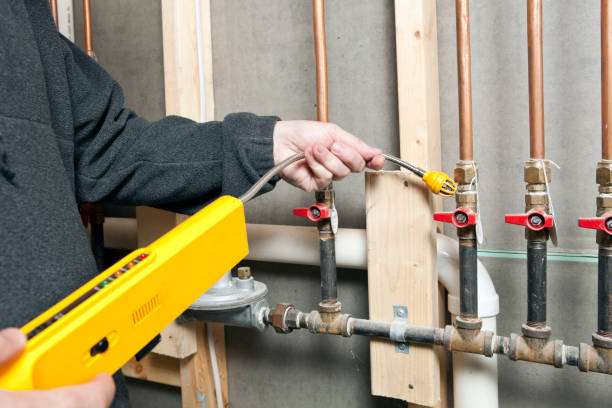Water sensing cables, also known as water detection cables or leak detection cables, are innovative devices designed to detect the presence of water or other conductive liquids. These cables play a vital role in protecting buildings, data centers, industrial facilities, and other environments from water damage. In this article, we’ll explore what water sensing cables are, how they work, their benefits, and provide tips for choosing the right one for your needs.
What is a Water Sensing Cable?
A water sensing cable is a specialized cable designed to detect the presence of water or other conductive liquids along its length. These cables are typically made up of several components:
- Sensing wires: Usually two or more conductive wires running the length of the cable.
- Insulating jacket: A water-permeable outer layer that protects the internal components.
- Absorbent material: A layer that helps retain moisture for detection.
- Protective sheath: An outer layer that protects the cable from physical damage.
Water sensing cables are available in various lengths and can be connected to form longer detection zones. They are often used in conjunction with control panels or monitoring systems to provide alerts when water is detected.
How Does a Water Sensing Cable Work?
The operation of a water sensing cable is based on electrical conductivity principles. Here’s a step-by-step breakdown of how these cables function:
- Normal state: In dry conditions, the sensing wires within the cable are electrically isolated from each other.
- Water contact: When water or another conductive liquid comes into contact with the cable, it penetrates the permeable outer jacket.
- Conductivity change: The liquid creates an electrical path between the sensing wires, changing the cable’s conductivity.
- Signal generation: This change in conductivity is detected by the monitoring system or control panel connected to the cable.
- Alert triggering: The system then triggers an alarm or notification, alerting personnel to the presence of water.
- Location identification: Some advanced systems can pinpoint the exact location of the leak along the cable’s length.
Benefits of Water Sensing Cables
Water sensing cables offer numerous advantages for leak detection and prevention:
- Early detection: These cables can detect even small amounts of water, allowing for rapid response to leaks before they cause significant damage.
- Continuous monitoring: Water sensing cables provide 24/7 monitoring, ensuring that leaks are detected even in unoccupied areas or during off-hours.
- Versatility: They can be used in a wide range of environments, from raised floors in data centers to basements and industrial settings.
- Scalability: Cables can be connected to cover large areas or complex layouts, providing comprehensive coverage.
- Low maintenance: Once installed, water sensing cables require minimal maintenance, making them a cost-effective solution for long-term leak detection.
- Integration capabilities: Many water sensing cables can be integrated with building management systems or IoT platforms for centralized monitoring and control.
- Precise location detection: Advanced systems can pinpoint the exact location of a leak along the cable, facilitating rapid response and minimizing damage.
- Non-intrusive installation: Water sensing cables can often be installed without disrupting existing infrastructure or operations.
- Environmental resistance: Many cables are designed to withstand harsh environments, including exposure to chemicals or extreme temperatures.
- Cost savings: By detecting leaks early, these cables can help prevent extensive water damage, potentially saving significant repair and replacement costs.
Things to Know About Water Sensing Cables That People Won’t Tell You
While water sensing cables are invaluable tools for leak detection, there are some lesser-known aspects to consider:
- False alarms can occur: High humidity or condensation can sometimes trigger false alarms, especially in environments with significant temperature fluctuations.
- Not all liquids are detectable: While designed primarily for water, these cables may not detect non-conductive liquids like oils or some chemicals.
- Cable damage can affect performance: Physical damage to the cable, such as cuts or severe bends, can impact its detection capabilities or create blind spots.
- Regular testing is important: Although low-maintenance, periodic testing of the system is crucial to ensure it’s functioning correctly.
- Installation method matters: Improper installation, such as routing cables through areas prone to water accumulation, can lead to frequent false alarms.
- Sensitivity adjustments may be necessary: Some systems allow for sensitivity adjustments to optimize performance in different environments.
- End-of-line resistors are crucial: These components are often required for proper system operation and accurate leak location detection.
- Contamination can affect performance: In industrial settings, build-up of dirt or chemicals on the cable can potentially impact its sensitivity over time.
- Length limitations exist: Each system has a maximum cable length it can support, which may limit coverage in very large installations.
- Drying time impacts reusability: After detecting water, some cables may require a drying period before they can accurately detect new leaks.
Tips for Choosing the Right Water Sensing Cable
Selecting the appropriate water sensing cable for your needs is crucial for effective leak detection. Here are some tips to help you make the right choice:
- Assess your environment: Consider the specific conditions where the cable will be installed, including temperature ranges, potential chemical exposure, and humidity levels.
- Determine coverage needs: Calculate the area you need to monitor and choose a cable length (or multiple cables) that provides comprehensive coverage.
- Consider integration requirements: Ensure the cable is compatible with your existing monitoring systems or choose a complete system that meets your needs.
- Evaluate sensitivity requirements: Some applications may require higher sensitivity than others. Choose a cable that offers appropriate detection thresholds for your needs.
- Check for location detection capabilities: If pinpointing leak locations is important, opt for a system that offers this feature.
- Assess durability: For harsh environments, look for cables with robust construction and appropriate chemical resistance.
- Consider future expansion: Choose a system that allows for easy expansion if you anticipate future growth or changes in monitoring needs.
- Evaluate alarm options: Decide whether you need local alarms, remote notifications, or integration with a centralized monitoring system.
- Check for certifications: Look for cables that meet relevant industry standards and certifications for your application.
- Consider total cost of ownership: While initial cost is important, also factor in installation complexity, maintenance requirements, and potential long-term benefits.
- Seek expert advice: Consult with leak detection specialists or system integrators who can provide guidance based on your specific needs and environment.
- Read user reviews: Look for feedback from other users in similar applications to gauge real-world performance and reliability.
In conclusion, water sensing cables are powerful tools for protecting assets and infrastructure from water damage. By understanding their operation, benefits, and potential limitations, you can make an informed decision when implementing a leak detection system. With proper selection, installation, and maintenance, water sensing cables can provide reliable, long-term protection against the potentially devastating effects of water leaks.




